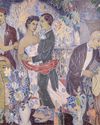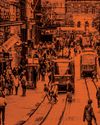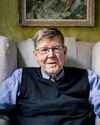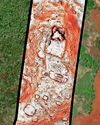
Ask Mark Levin what excites him about his work, and the associate professor of chemistry at the University of Chicago could double as a poet.
"We're one of the only fields of science that at its core is about making things that have never existed anywhere else in the universe, and would never have existed if we didn't intervene," he says. "We get to manipulate matter at the atomic level to shape it to whatever purpose we can think of."
Some of those things that would never have existed are of immense value to humanity. From synthetic dyes to celluloid, materials to medicines, synthetic chemistry has made our world a richer place, and helped us live longer to enjoy it.
With effort, chemists can synthesise almost any molecule imaginable, but methods are limited, relying on the molecular building blocks available and potentially requiring many steps. "The approach that has been adopted is to add other chemical groups to the already existing molecule, which changes it only on its periphery," says Prof Richmond Sarpong, at the University of California, Berkeley.
When it comes to altering a molecule more fundamentally, Levin likens those atoms and bonds to the connectors and rods in a child's construction set: "It's very obvious when you're looking at the toy that the best way to change it would be to pull out the part you don't want and put the new one in," he says. "It has always bothered me that that's not something we have the capacity to do chemically."
That is, not until now. Inspired in part by the revolutionary genome-editing technology Crispr-Cas9, Levin and Sarpong are among a handful of chemists developing methods to insert, delete and swap individual atoms within molecules. They call it "skeletal editing" and they hope it will change their field - and our world by harnessing chemical reagents, catalysts or light, to perform edits quintillions of times.
This story is from the {{IssueName}} edition of {{MagazineName}}.
Start your 7-day Magzter GOLD free trial to access thousands of curated premium stories, and 9,000+ magazines and newspapers.
Already a subscriber ? Sign In
This story is from the {{IssueName}} edition of {{MagazineName}}.
Start your 7-day Magzter GOLD free trial to access thousands of curated premium stories, and 9,000+ magazines and newspapers.
Already a subscriber? Sign In

Finn family murals
The optimism that runs through Finnish artist Tove Jansson's Moomin stories also appears in her public works, now on show in a Helsinki exhibition

I hoped Finland would be a progressive dream.I've had to think again Mike Watson
Oulu is five hours north from Helsinki by train and a good deal colder and darker each winter than the Finnish capital. From November to March its 220,000 residents are lucky to see daylight for a couple of hours a day and temperatures can reach the minus 30s. However, this is not the reason I sense a darkening of the Finnish dream that brought me here six years ago.

A surplus of billionaires is destabilising our democracies Zoe Williams
The concept of \"elite overproduction\" was developed by social scientist Peter Turchin around the turn of this century to describe something specific: too many rich people for not enough rich-person jobs.

'What will people think? I don't care any more'
At 90, Alan Bennett has written a sex-fuelled novella set in a home for the elderly. He talks about mourning Maggie Smith, turning down a knighthood and what he makes of the new UK prime minister

I see you
What happens when people with acute psychosis meet the voices in their heads? A new clinical trial reveals some surprising results

Rumbled How Ali ran rings around apartheid, 50 years ago
Fifty years ago, in a corner of white South Africa, Muhammad Ali already seemed a miracle-maker.

Trudeau faces 'iceberg revolt'as calls grow for PM to quit
Justin Trudeau, who promised “sunny ways” as he won an election on a wave of public fatigue with an incumbent Conservative government, is now facing his darkest and most uncertain political moment as he attempts to defy the odds to win a rare fourth term.

Lost Maya city revealed through laser mapping
After swapping machetes and binoculars for computer screens and laser mapping, a team of researchers have discovered a lost Maya city containing temple pyramids, enclosed plazas and a reservoir which had been hidden for centuries by the Mexican jungle.

'A civil war' Gangs step up assault on capital
Armed fighters advance into neighbourhoods at the heart of Port-au-Prince as authorities try to restore order

Reality bites in the Himalayan 'kingdom of happiness'
High emigration and youth unemployment levels belie the mountain nation's global reputation for cheeriness